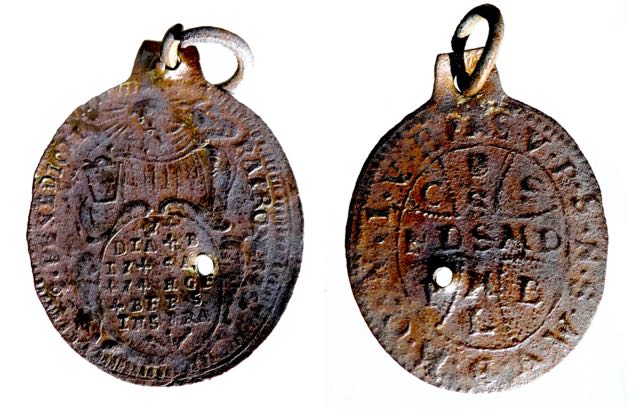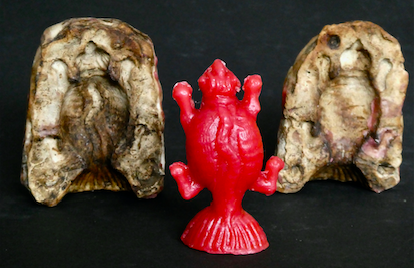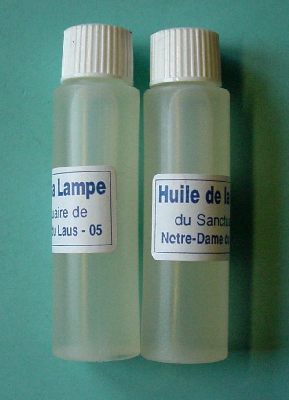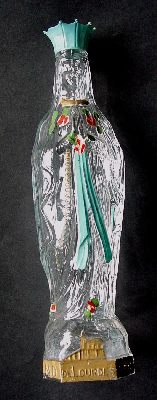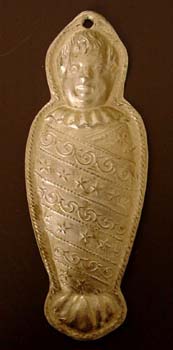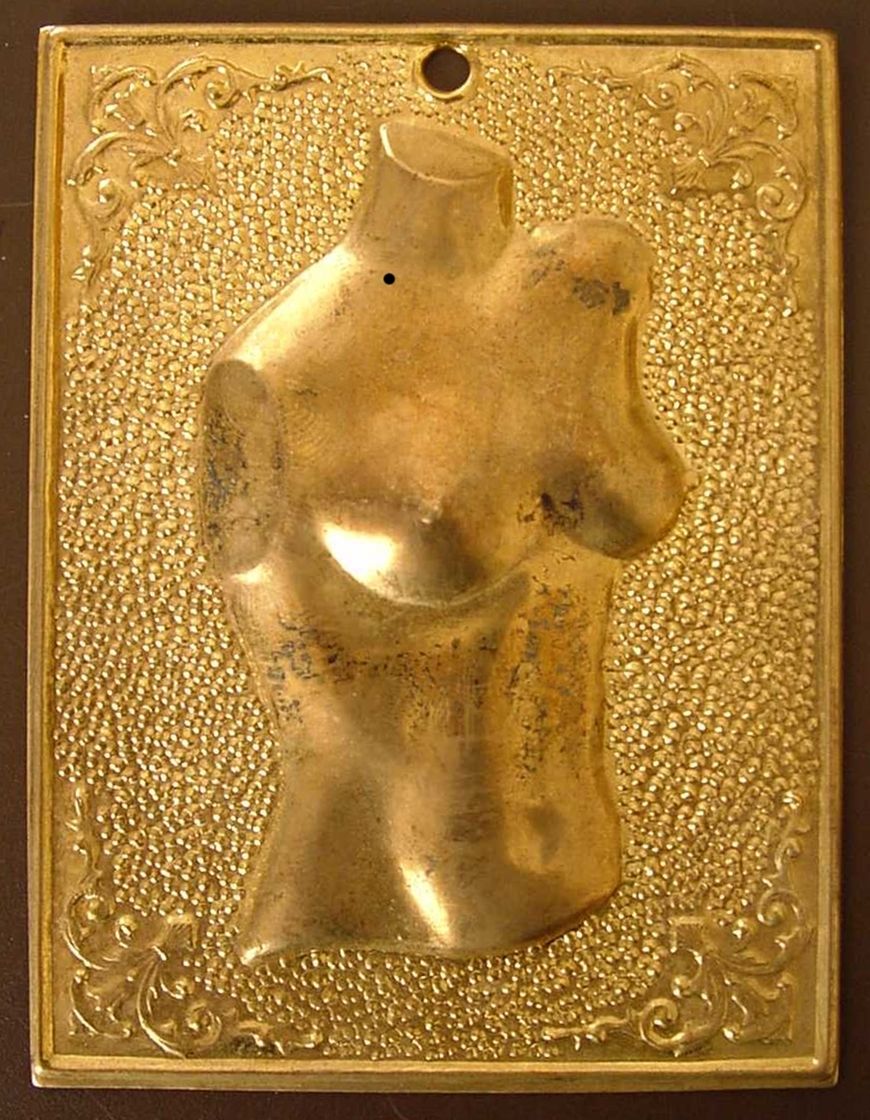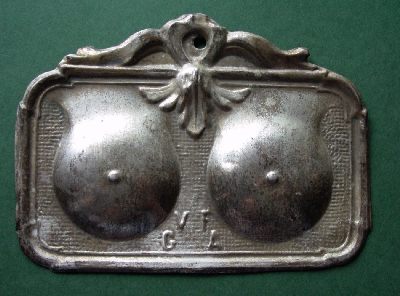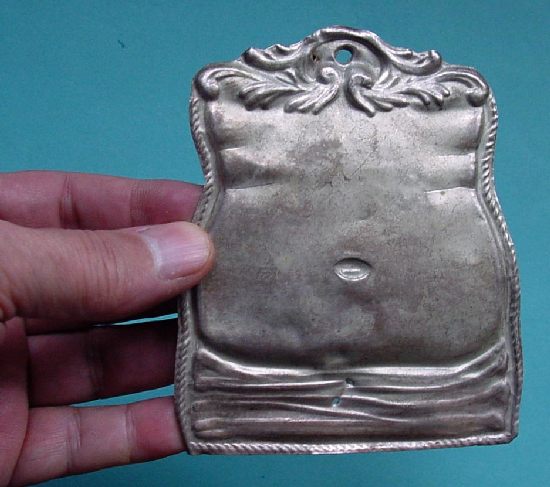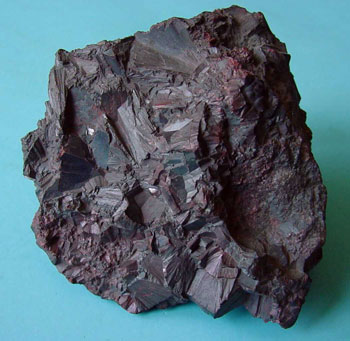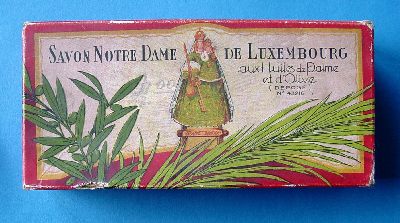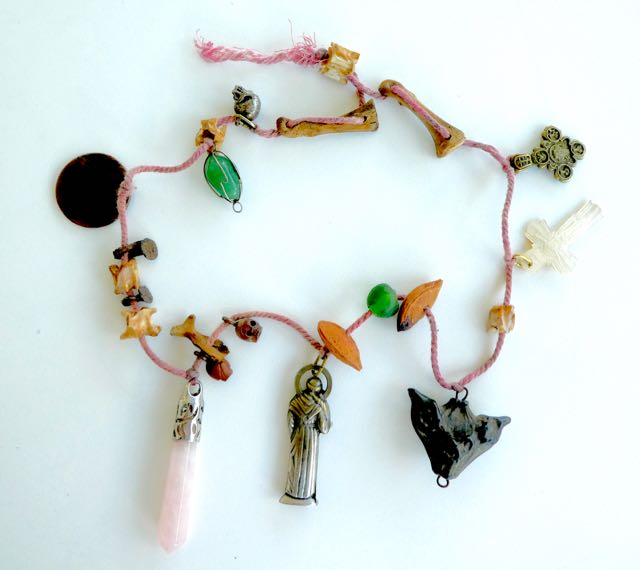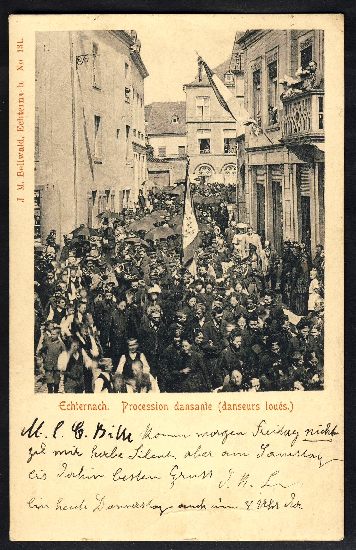Amulets |
||
Amulet against plague |
||
The "Benediktuspfennig" is an amulet which should help the believer against everyday dangers such as hailstorms, poisoning, fever, plague, gallstones, evil spirits, witches, the devil, but also at births and on the deathbed ...
"Such amulets were useful specially in persons working around plague victims" (Joseph Patrick Byrne, Daily Life During the Black Death, Greenwood Press 2006 p.53). .
For details please sea the german version. |
Amulets |
||
Uterus as a toad |
||
In popular medicine the female uterus was taken for a toad for long time, living as an animal in the bellow of the woman. It could be kind as a young lamb, but occasionnally it tourned feroceous as a lion, biting the woman from the inner.
In southern Germany women then said "the toad is angry, y have to give him food".
Votive toad were offered in sanctuarys of Our Lady, imploring Maria to heal a female sickness or help to have a baby.
Our votive wax toad comes from Munich, from Mathias Ebenboeck working around 1900. |
Amulets |
||
Blessed Oil |
||
In 1664 the Blessed Virgin appeared to a young girl in Laus in the French Alps. A series of miraculous healings followed from 1665 on, paralysies and healings of eye pathologies especially. During the apparitions, the Blessed Mother asked for a church and a house for priests to be built, with the intension of drawing people to greater conversion, especially through the sacrament of penance. A new element appeared in 1666: oil from the sanctuary lamp which healed eye diseases, when put on the eyelid.
See more about healing and holy oils in christanity in the "german" part of this homepage. |
Amulets |
||
Blessed water |
||
Water from the miraculous font in Lourdes. This vial belonged to the grand-mother of a collegue - she brought it home from a pilgrimage to Lourdes, shortly after the Second Worl War. Since the bottles are sold unchanged ... |
Amulets |
||
Ex-Voto (1) |
||
We bought this little ex-voto on the flea market of Porta Potense in Rome in 1999 - a finely worked silver foil showing a baby closely wrapped in its napkins. Such ex-voto's, or in metal or in wax, were put on the altars in times of high mortality in order to solicit the grace of heaven for the kids. Most of the time this kind of ex-voto was meant to underline a prayer in a case of sterility or a difficult childbirth.
Some of these peaces were marked "GR" that means "gratia receuta" received heavenly blessing.
Internal Links UK: https://www.kugener.com/en/amulette-fr/65-artikel/2591-ex-voto-6.html FR: https://www.kugener.com/fr/amulette-fr/65-artikel/2589-ex-voto-4.html DE: https://www.kugener.com/de/amulette-en/65-artikel/994-ex-voto-1.html |
Amulets |
||
Ex-Voto (2) |
||
We bought this amulet in Athens in 1996 in a little shop behind the central market hall. In a silvery folio it costed 400 drachmas, we decided to by one in a gold-imitation-folio for 700 drachmas hoping it would protect us the better.
Generally this kind of amulet is offered in case of chest or breast disease. Up to now we had no such pathology, thanks probably to our prophylactic purchase.
Internal Links UK: https://www.kugener.com/en/amulette-fr/65-artikel/2603-ex-voto-7.html FR: https://www.kugener.com/fr/amulette-fr/65-artikel/2601-ex-voto-4.html DE: https://www.kugener.com/de/amulette-en/65-artikel/995-ex-voto-2.html |
Amulets |
||
Ex-Voto (3) |
||
This amulet comes from an austrian flea market, in Innsbruck, where i bought it in 2004.
The 4 letters V.F.G.A. correspond to a courant thanksgiving expression: "Voto Fatto Grazia Avuta" resp. "Votum Fecit et Gratiam Accepit". "Votum Feci Gratium Accepti" that means. "I made a will, y got heavenly blessing".
Link |
Amulets |
||
Ex-Voto (4) |
||
This Ex voto against any kind of bellow-disease and pain was bought in Luxembourg in 2000 on a local flea market.
Let me present you this amulet y bought at a flea market in Luxembourg in 2000 - i do not know which saint the prayer went to, nor the kind of pathology for which the saint was invoked. |
Amulets |
||
Hematite |
||
The red coloured stones healed "red" diseases such as nosebleed, blood coughing, atonic bleedings in delivery.
For more details please consult the "german" page. |
Amulets |
||
Marian cult |
||
This is a nice example of the exxagerated devotion to Maria: The Soap of Our Lady of Luxembourg.
White is a symbol of cleanliness - wedding in white, first communion dress without any spot, your soul without a sin. Where man is no more "white", Maria comes and helps with his soap with "palm- and oliveoil.
Object Nous présentons l'emballage pour un pain de savon produit au gr.-d. de Luxembourg, plus précisément à Pétange, dans les années 20 du XXème siècle.
|
Amulets |
||
Necklace, magic |
||
Our magic necklace is done witz 23 amulets, threaded on a reddish hemp. This kind of amulet was hanged on the top of the cradle to protect the newborn from witches an malicious gosts.
For more details please consult the "german" page. |
Amulets |
||
Pilgrims for hire |
||
When, in the time, you were unable to proceed to a pilgrimage you had promised to do, you could rent a pigrim who made the pilgrimage in your place. Generally young boys or young men offered their service for some few pennies - then they made the pilgrimage for one or two persons, somtimes even more so that this "pilgrimage" was the effort worth.
On the postal card from the photograph Bellwald we see mixed groups of women and children dancing for money.
When, in the time, you were unable to proceed to a pilgrimage you had promised to do, you could rent a pigrim who made the pilgrimage in your place. Generally young boys or young men offered their service for some few pennies - then they made the pilgrimage for one or two persons, somtimes even more so that this "pilgrimage" was the effort worth.
On the postal card from the photograph Bellwald we see mixed groups of women and children dancing for money. |




